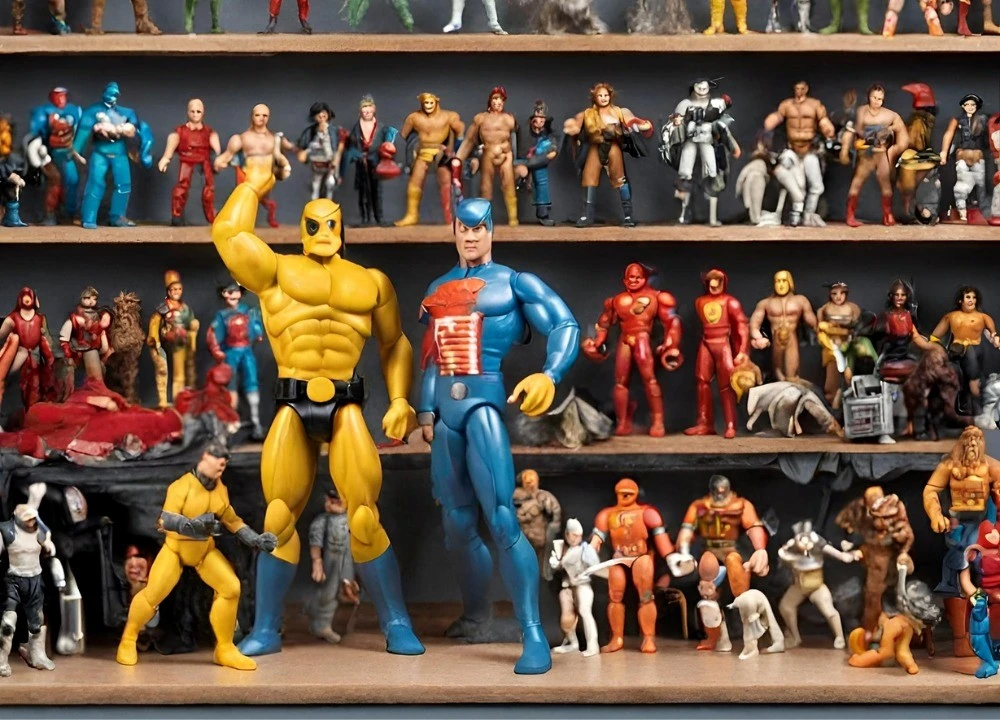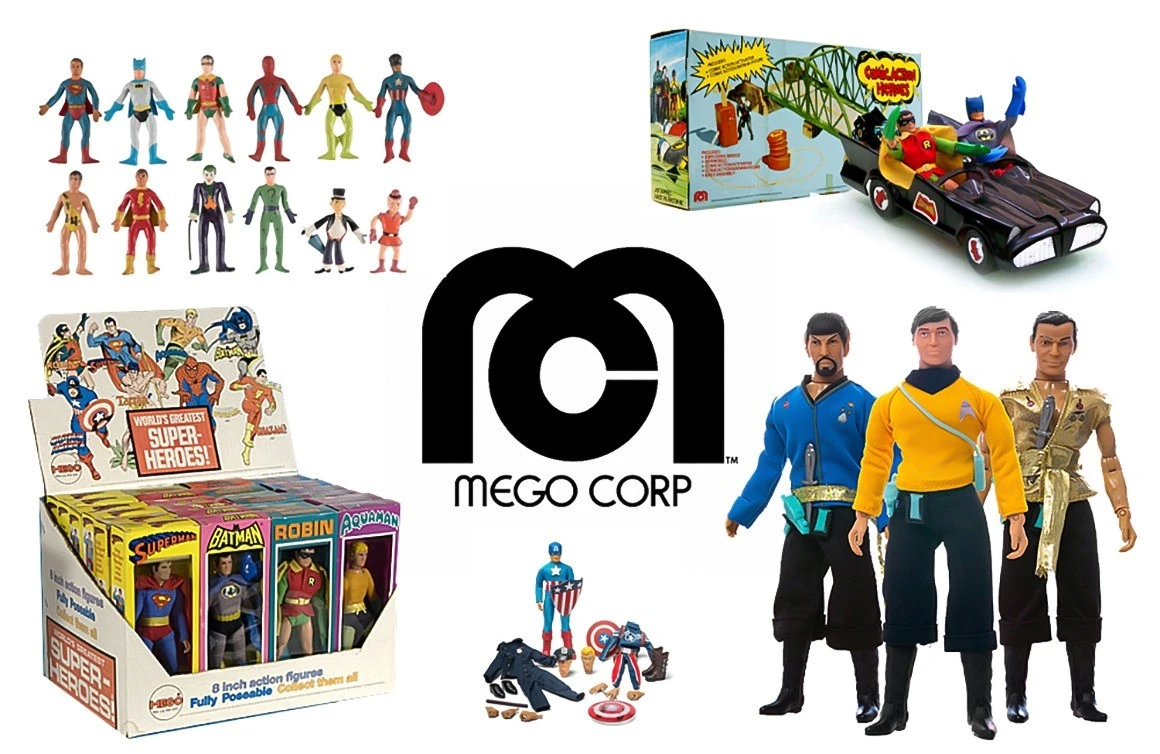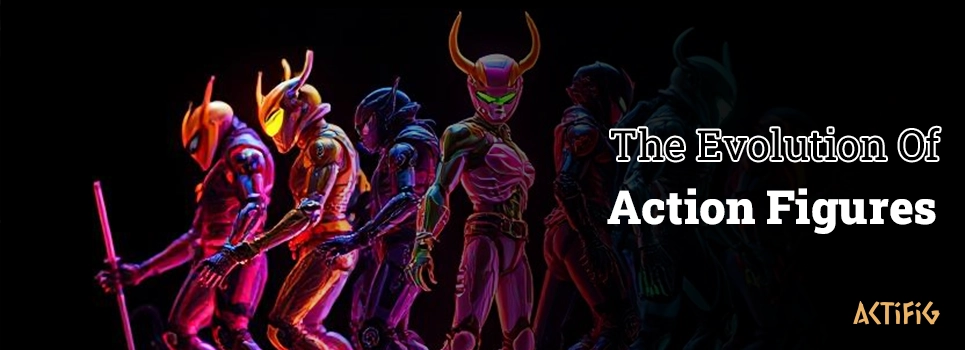No products in the cart.
Action figures have long stood at the crossroads of play, imagination, and pop culture. From simple plastic molds to intricately designed collectibles, their journey reflects shifts in society, technology, and entertainment. The evolution of action figures isn’t just a toy story—it’s a cultural narrative shaped by generational trends, media influences, and consumer demand.
In this article of Actifig, we’ll explore how these iconic figures have transformed over time and why they continue to captivate kids, collectors, and fans worldwide.
| Era | Key Milestone | Highlights |
|---|---|---|
| 1960s | Birth of Action Figures | G.I. Joe debuts; realism, articulation, military themes |
| 1970s | Rise of Licensed Characters | Superheroes & TV icons enter toy shelves (Mego) |
| 1980s | Cartoon & Toy Line Synergy | He-Man, Transformers; toys & shows promote each other |
| 1990s | Collector Culture Emerges | Limited editions, detailed sculpts, chase figures |
| 2000s–2010s | Hyper-Realism & Tech Advances | 3D modeling, lifelike detail, digital fan communities |
| Modern Era | Inclusivity & Representation | Diverse characters, authentic storytelling, social impact |
| Future | Digital Integration | AR features, NFTs, 3D printing, immersive play |
The Birth of Action Figures: 1960s Origins
The evolution of action figures began in the 1960s with a revolutionary idea: a poseable toy made specifically for boys. In 1964, Hasbro introduced the original G.I. Joe, branding it as an “action figure” to avoid the stigma associated with dolls. This 12-inch military-themed figure featured movable joints, interchangeable uniforms, and gear—pioneering a new genre in the toy industry. Its success not only defined the term “action figure” but also sparked a wave of imitators. These early models emphasized realism and storytelling, allowing kids to recreate heroic adventures. More than just toys, they reflected Cold War-era ideals and introduced a new play pattern focused on action and identity. This decade laid the foundation for everything that followed in the dynamic history of action figures.


The 1970s: Licensed Characters Enter the Scene
As the evolution of action figures moved into the 1970s, the industry witnessed a pivotal transformation: the rise of licensed characters. Mego Corporation led this shift by securing rights to iconic superheroes and TV personalities like Batman, Superman, and Star Trek. These 8-inch figures, complete with fabric costumes and molded heads, allowed children to reenact scenes from their favorite shows. This decade marked the fusion of entertainment and toy manufacturing, setting the stage for character-driven branding. Unlike the generic military figures of the ’60s, these new toys were deeply rooted in pop culture, making them instantly recognizable. The success of licensed action figures in the ’70s reshaped marketing strategies and expanded the industry’s reach, driving the next chapter in the evolution of action figures.
10 Top WWE Action Figures to Collect in 2025
Read articleThe 1980s Boom: Cartoons, Toy Lines, and Mass Popularity
The 1980s marked a golden era in the evolution of action figures, fueled by the explosive synergy between cartoons and toy lines. Iconic franchises like He-Man and the Masters of the Universe, G.I. Joe: A Real American Hero, and Transformers dominated toy shelves and Saturday morning television. These brands pioneered a marketing model where animated series were designed specifically to promote toys—blurring the lines between entertainment and advertising. Action figures became smaller, more detailed, and loaded with accessories, enabling dynamic play and collectibility. This decade also introduced massive playsets and vehicles, encouraging immersive storytelling. The 1980s firmly established action figures as cultural touchstones, proving that characters from screen to shelf could captivate imaginations—and redefine the history of action figures forever.
The 1990s: Rise of Collectors and Limited Editions
In the 1990s, the evolution of action figures took a significant turn as the industry began catering to adult collectors. No longer just children’s playthings, figures became detailed, stylized, and often limited in production. Companies like McFarlane Toys revolutionized sculpt quality with ultra-realistic characters from Spawn, Movie Maniacs, and video game franchises. Meanwhile, superhero lines such as Batman: The Animated Series introduced collectible packaging and variant editions. This decade saw the rise of exclusives, chase figures, and convention-only releases, sparking a collector-driven market. Retail shelves and comic shops became treasure hunts for rare finds. The 1990s redefined action figures as both toys and art pieces—solidifying their value in pop culture and fueling the continued evolution of action figures across generations.
What is the action figure creation process?
Read article2000s–2010s: Technology and Hyper-Realism
The 2000s and 2010s brought a wave of innovation that pushed the evolution of action figures into new realms of hyper-realism and advanced engineering. Brands like NECA, Hot Toys, and Hasbro’s Marvel Legends set new standards with lifelike sculpts, intricate paint applications, and increased articulation. 3D scanning and digital modeling allowed for screen-accurate representations of movie characters, athletes, and video game icons. Interchangeable parts, layered clothing, and premium materials blurred the line between toys and collectibles. At the same time, fan engagement grew through online communities, forums, and digital marketplaces. These decades elevated action figures into artistic representations of fandom—offering collectors not just play value, but detailed, display-worthy pieces that marked a new era in the history of action figures.
The Role of Pop Culture and Fandom
Pop culture and fandom have become driving forces in the ongoing evolution of action figures. As movies, TV shows, anime, and gaming franchises grew in cultural significance, so did the demand for screen-accurate, collectible figures. Comic-Con exclusives, fan-driven crowdfunding campaigns, and viral unboxing videos have turned action figures into a form of social currency. Platforms like Instagram and YouTube created communities where fans showcase photography, reviews, and custom builds. These spaces transformed collecting from a solitary hobby into a shared cultural experience. Fandom now shapes product lines, influencing character selection, articulation standards, and reissues. In today’s market, the evolution of action figures is no longer led by toy companies alone—it’s co-authored by passionate fans worldwide who elevate these figures into icons.


Modern Trends: Inclusivity and Representation
A defining aspect of the modern evolution of action figures is the growing emphasis on inclusivity and representation. Toy manufacturers are increasingly embracing diversity by producing figures that reflect a broader spectrum of identities—across gender, race, body type, and ability. Characters like Shuri from Black Panther, Kamala Khan as Ms. Marvel, and differently-abled superheroes are no longer exceptions—they’re part of the norm. This shift not only mirrors societal progress but also empowers children and collectors to see themselves in the stories they love. Representation has expanded beyond tokenism into authentic character design and storytelling. As the evolution of action figures continues, inclusivity is proving essential for building a more relatable, meaningful, and future-focused toy landscape.
Digital Age and the Future of Action Figures
In the digital era, the evolution of action figures is accelerating through cutting-edge technology and interactive experiences. Augmented reality (AR) features, app integration, and even NFT-based collectibles are reshaping how fans engage with their favorite characters. Some modern figures come with scannable codes that unlock exclusive content or virtual playsets, merging physical toys with digital ecosystems. 3D printing has also empowered fans to customize and create their own accessories or characters. As the metaverse expands, action figures are becoming part of immersive storytelling across platforms. The future of this industry lies at the intersection of tactile craftsmanship and digital innovation. In this evolving landscape, the history of action figures reflects not only changing tastes—but a redefinition of play itself.
What are the action figures and dolls differences?
Read articleConclusion
From humble beginnings to high-tech collectibles, the history and evolution of action figures tells a rich story of creativity, culture, and innovation. What began as simple toys has become a global phenomenon shaped by media, technology, and community. Whether you’re a nostalgic collector or a new enthusiast, action figures continue to offer connection, representation, and imagination. As trends shift and technology evolves, one thing is certain—the evolution of action figures is far from over, and its next chapter is already being written.




There are no comments yet.